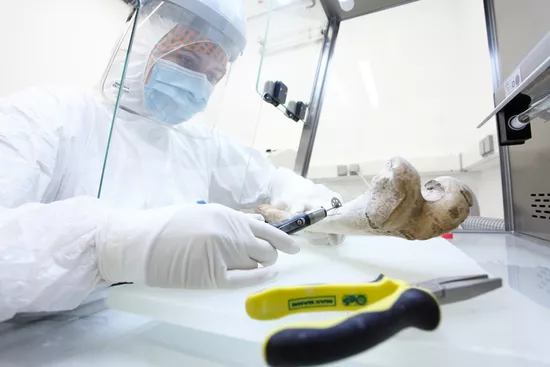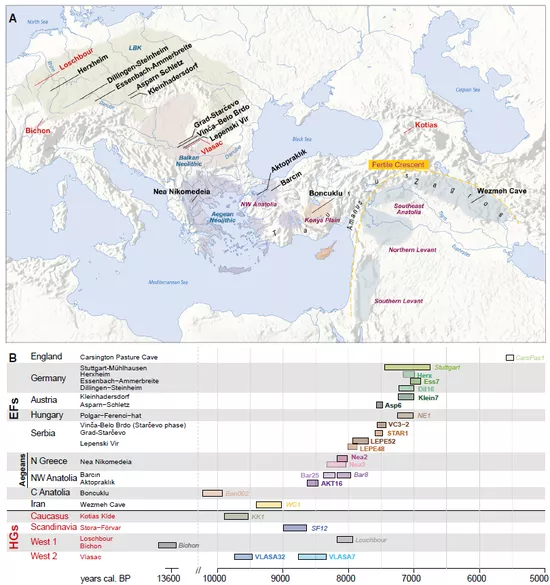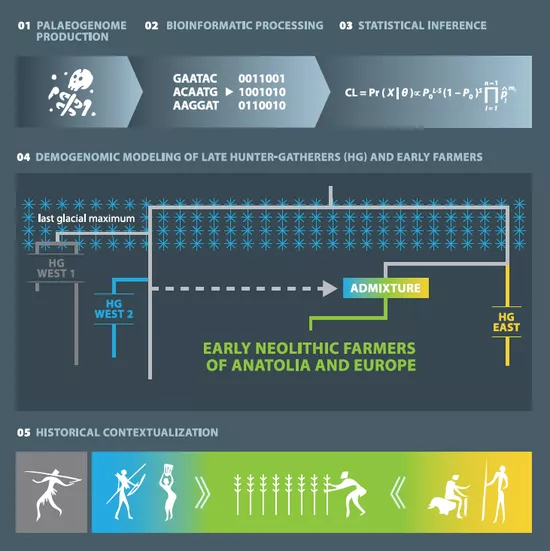The birth of agriculture is a key transformation in human history. From then on, human beings began to settle down and get enough food without risking hunting As a result, the population began to grow rapidly. It can be said that without agriculture, today's society would not have appeared. The question is, how did agriculture emerge and who was the earliest farmer? According to the existing archaeological evidence, the scientific community believes that about 12000 years ago, agriculture independently originated in a human group in the Middle East, and then spread to Western Europe through Turkey and Greece. Since then, agriculture has emerged independently in some other regions of the world.
Now, a study published in the journal Cell reveals a clearer origin of farmers through ancient DNA sequencing, and puts forward a new view: they are not from a separate group as previously thought, but formed by the fusion of two hunting and gathering groups after the end of a turbulent era when mankind is facing a survival crisis.

"This study is the first attempt to build a population model based on ancient DNA evidence," said Laurent excofier, a geneticist professor at the University of Bern and corresponding author of the paper Compared with traditional sequencing methods, the research team obtained higher quality data and more information through deep sequencing technology (i.e. multiple sequencing of each ancient human genome): "we obtained more detailed information about the history of these populations, including how farmers' ancestors separated and spread, and we can infer the date of population mixing, which was impossible before."

Based on ancient DNA models and more geographic, cultural, archaeological and climatic data, researchers have restored a new picture of the birth of Agriculture: about 25000 years ago, an ancient human group was divided into two groups: one migrated to Western Europe and the other remained in the Middle East. Then, the sudden ice age made the population of Western Europe decrease sharply and even face the crisis of extinction. This also explains why the offspring of European hunter gatherers have low genetic diversity.
As the temperature fluctuates, the population also rises and falls. After the end of the ice age, various groups expanded outward, resulting in overlapping fields and population integration. About 12900 years ago, the first farmers were born from the integration of hunter gatherers in Western Europe and groups in the Middle East. About 8000 years ago, these farmers who domesticated crops and animals moved westward. They eventually brought culture to Europe along the Danube River. Many people in Europe today are also their descendants.

After uncovering the story of the origin of farmers, the research team plans to further analyze the ancient DNA of people from other regions and ages, so as to reconstruct the demographic and cultural features of different stages of the stone age and bronze age for us.
reference material:
[1] Marchi et al。 The genomic origins of the world‘s first farmers。 Cell (2022)。 DOI: 10.1016/j.cell.2022.04.008
[2] High-resolution genomes reveal nuanced origins of the first farmers。 Retrieved May 12th, 2022 from https://www.eurekalert.org/news-releases/951759
This article is from Wuxi apptec content wechat team